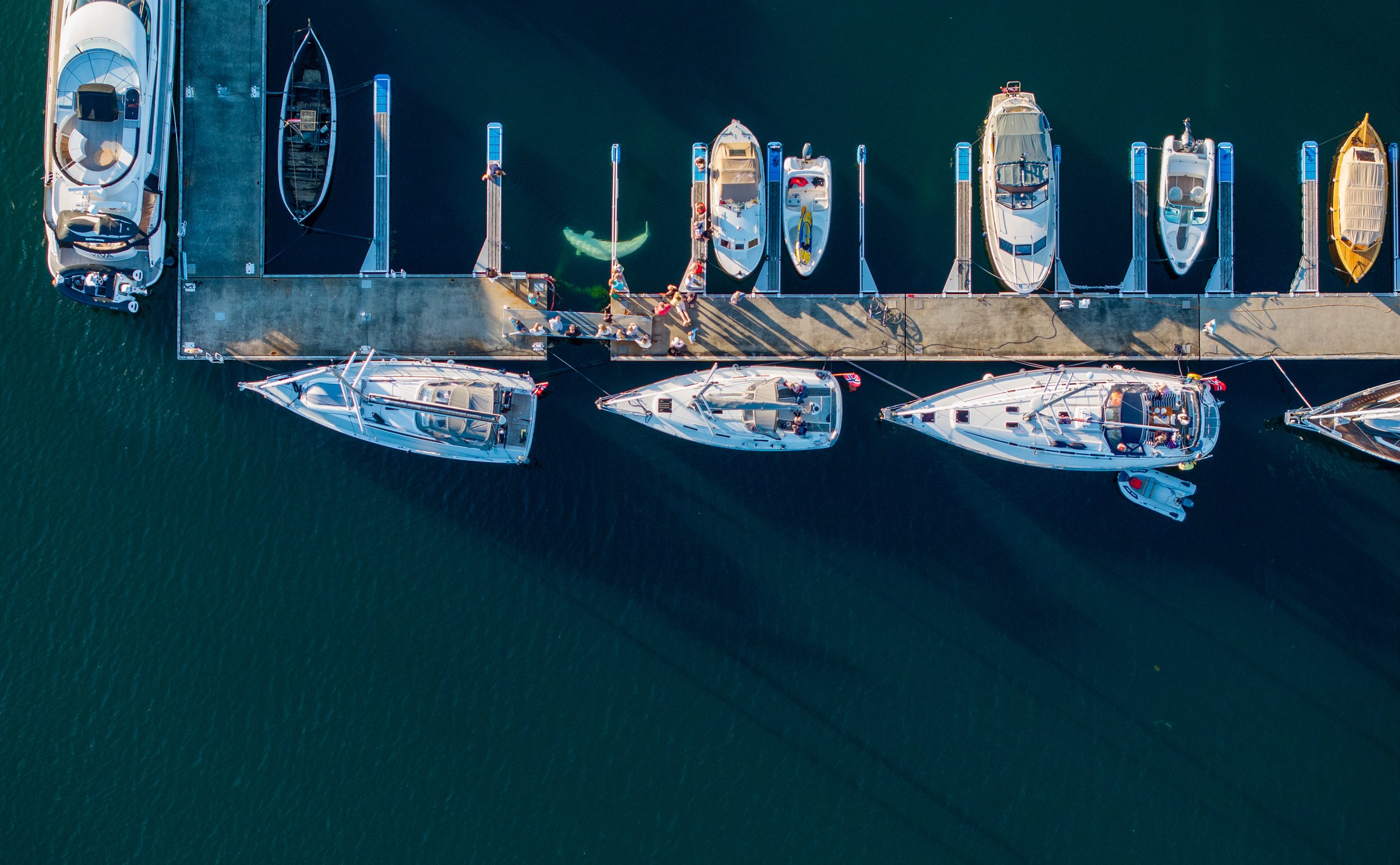
Movements and body condition scores for Hvaldimir the beluga whale (Delphinapterus leucas) 2019-2024
Sebastian W. Strand¹, Natalie Barefoot², Piper D. Bishop¹, Abigail C. Dahl¹, Lina Dahl¹, Nadine Erath¹, Ida Marie B. Fossmark¹, Laurie J. Gage¹, Stephen D. McCulloch¹, Alexander Mildener¹, Diana Reiss¹, Sarah E. Richard¹, Courtney S. Vail¹, Ingrid N. Visser¹

Abstract
In April 2019 Hvaldimir a solitary sociable beluga whale (Delphinapterus leucas) appeared in the Troms & Finnmark region of Norway. He was wearing a harness of apparent Russian origin, with a camera-like mount, which inspired the moniker ‘Russian Spy Whale’. Previously a captive cetacean, Hvaldimir responded to hand signals, solicited human interactions and exhibited food-begging behaviour. Between 2019-2024 data was collected on his location/movement and, using a 5-point scale, on his body condition score (BCS). Initially, his BCS was 3 and for a few months, he was provisioned with previously-frozen fish by a local NGO. Sea-surface temperatures (SST) at the time were 3-8°C. He resided in the region for approximately six months where his BCS improved to 4. After ceasing to accept fish from humans, he sojourned southward and was frequently observed at Atlantic salmon (Salmo salar) farms, presumably feeding on the wild fish they attracted. Hvaldimir arrived at his southern-most point in the Gothenburg region, Sweden, in July 2023 where the SST reached >28°C. Having travelled a minimum distance of 3,500 kms, his BCS had declined to 2, leading to a prominent dorsal ridge and a loss of nuchal fat deposits resulting in ‘peanut head’. In July 2023, he reversed direction and returned to southwestern Norway, an area with abundant salmon farms. Until his death in August 2024, he remained in the vicinity of salmon farms in the Stavanger region where the SST was 3-21°C and his BCS returned to, and remained at 4. Although Hvaldimir was free-ranging and no longer dependent on direct provisioning by humans, he was still seemingly reliant for his foraging success on the wild fish found in association with salmon farms. As such, he could not entirely be considered a ‘wild’ whale and his survival away from such farms was questionable.
Introduction
Beluga whales (Delphinapterus leucas) are Monodontids with a circumpolar distribution. They are highly social and live in fission-fusion societies (O’Corry-Crowe et al., 2020). Belugas are philopatric and demonstrate site fidelity (Brown-Gladden et al., 1997).
Hvaldimir was a semi-enculturated beluga whale that was first observed near Hammerfest, Norway in spring 2019.
He was a sociable solitary cetacean, isolated from other belugas, previously captive, and sought human interaction almost daily.
When he appeared in Norway, he was described as lean (Gunther et al., 2022), and received assisted feeding. After July of 2019, he foraged exclusively for his own food.
Hvaldimir sought out aquaculture farms along the coast almost daily. He was observed feeding on wild fish congregating around the facilities, and also interacted regularly with staff.
He resided along the Norwegian coast for >5 years, perishing in August 2024 at ~15.
BCS is a numerical score of energy reserves in the body and is an indicator of an individual’s energy reserves. This study plots Hvalidmir’s location data and notes changes in BCS.
Methods
Data Collection:
Daily observations were made opportunistically from July 2021-August 2024.
GPS data from April 2019 to March 2022 was from reported sightings and direct observation. GPS data from March 2022-2024 was generally from direct observations.
Equipment: Photos and videos were collected with GoPro cameras, DSLR cameras, phones, and aerial drones.
Data Analysis:
A heatmap created indicating length of stays and Aquaculture Sites
GPS was used to record latitude and longitude with a total number of data points being 397.
A Kernel density heatmap was created through QGIS based on GPS coordinates.
Individual points represent daily sightings of Hvaldimir, categorised by year.
The heatmap illustrates the mode sighting location by month.
The duration of stay on the heatmap is represented by a colour gradient, ranging from a minimum of one month (light blue) to a maximum of 13 months (red). A zero-month stay is transparent colour. (Fig. 1).
Locations of Norwegian Aquaculture Sites
Norwegian aquaculture sites were plotted on a separate map in QGIS (Fig. 4).
The points show the approximate centre of all aquaculture sites in Norway in 2024 (n=1358) (geonorge.no, 2024).
Sweden does not farm salmon (forskning.no, 2021).
Body Condition Scoring (BCS)
Scored using a Likert 5-point scale:
1- Emaciated 2- Lean 3- Normal 4- Robust 5- Obese
Assigned numerical score based on morphological characteristics such as pronouncement of blubber rails, convexity, thickness of neck, visibility of ribs, shape of the head (peanut head or round).
Six scorers (SS, AM, IV, DR, LG, SM) with varying experiences with belugas and scoring BCS assessed the data set. Two scorers (SS and AM) made joint assessments of all materials. Four scorers with marine mammal expertise (IV, DR, LG, SM) scored varying subsets of the data set.
At minimum, four scorers total assessed each photo in the data set. If the scorers agreed on their assessment, the appropriate BCS was given. If there was disagreement, the relevant scorers met to reassess, viewing additional media if possible, to determine a final BCS.
Results
Hvaldimir travelled a minimum distance of 3,500 km from 2019-2024 (Table 1).
He travelled primarily southwards from 2019-2023 (Fig. 1).
Hvaldimir was in Norwegian waters for 64/66 months. Norway’s coastline has abundant aquaculture locations where he regularly foraged.
Northernmost point: Hammerfest, Norway in 2019 (average annual SST: 6.7°C).
Southernmost point: Gothenburg, Sweden June-July 2023 (SST >28°C). No presence of aquaculture farms in the region.
Returned to southwestern Norway in August 2023, an area with abundant (>50) aquaculture sites (purple points, Fig. 1). He remained in this region until his death, 30 August 2024.
BCS were established for June 2019, July, August, December of 2021, and every month from March 2022 until his death in August 2024 (n=34).
In April 2019 when first discovered in northern Norway (blue points, Fig. 1) Hvaldimir was described as ‘lean’.
From 16 May until 19 July 2019, provisioning with dead herring occurred. It was unclear if he was solely reliant on provisioning.
Between June 2019-March 2023 he moved generally southward along the Norwegian coast and maintained a BCS of 3 (Fig. 2) or 4 (Fig. 3A).
In March-July 2023, he moved further southward and into Sweden. In June-August his BCS declined to 2 (Fig. 3B). This decrease coincided with movement away from aquaculture farms.
From August 2023-August 2024 (until his death), he stayed in southwestern Norway, which was the longest period he remained in one general area during the study period (purple points, Fig.1).
The necropsy reported his death as linked to complications from a 35 cm stick lodged in his throat. Blubber thickness ranged from 3-9 cm depending on the measured site, which is within the normal range for male belugas.
Fig. 1
Hvaldimir Sightings Map
Fig. 2
Hvaldimir BCS 3 on a 5 point Likert scale
Photo Credit ~ Antoine Drancey
Fig. 3A
BCS 4, highest recorded
Fig. 3B
BCS 2, lowest recorded
Fig. 4
Locations of Norwegian aquaculture sites
Table 1
Coastal distance travelled by year, not counting daily activity
Table 2
Blubber Thickness of Belugas by Age and Population
Table 3
Months Scored Above BCS 3 by Year
Discussion
Hvaldimir maintained a relatively stable BCS of 3-4 while in Norwegian waters. The decline in BCS after he moved into Swedish waters appeared to be correlated with his significant increase in travel distance, the lack of aquaculture or the reduced fish stocks in the region and possibly the warmer water temperatures affecting his appetite. The impacting factors are not mutually exclusive.
Although Hvaldimir’s body condition was scored for 34 months, the inconsistency in body angles required the use of multiple images or video clips. The necropsy report of 3-9 cm blubber thickness validated the final BCS of 3.
Hvaldimir survived ~5.5 years in the wild. BCS was used as an indicator of his health and fitness and the dataset collated for this individual could be of value for comparison to other belugas including other solitary sociable belugas and those in endangered populations. Management plans should include similar assessments especially over long durations such as reported here.
References
Ball, H. C., Londraville, R. L., Prokop, J. W., George, J. C., Suydam, R. S., Vinyard, C., ... & Duff, R. J. (2017). Beyond thermoregulation: metabolic function of cetacean blubber in migrating bowhead and beluga whales. Journal of Comparative Physiology B, 187, 235-252.
Brown Gladden, J. G., Ferguson, M. M., & Clayton, J. W. (1997). Matriarchal genetic population structure of North American beluga whales Delphinapterus leucas (Cetacea: Monodontidae). Molecular Ecology, 6(11), 1033-1046.
Burek-Huntington, K. A., Dushane, J. L., Goertz, C. E., Romero, C. H., & Raverty, S. A. (2015). Morbidity and mortality in stranded Cook Inlet beluga whales Delphinapterus leucas. Diseases of Aquatic Organisms, 114(1), 45-60.
Cornick, L. A., Quakenbush, L. T., Norman, S. A., Pasi, C., Maslyk, P., Burek, K. A., ... & Hobbs, R. C. (2016). Seasonal and developmental differences in blubber stores of beluga whales in Bristol Bay, Alaska using high-resolution ultrasound. Journal of Mammalogy, 97(4), 1238-1248..
Günther, B., Jourdain, E., Rubincam, L., Karoliussen, R., Cox, S. L., & Arnaud Haond, S. (2022). Feces DNA analyses track the rehabilitation of a free-ranging beluga whale. Scientific Reports, 12(1), 6412.
MacMillan, K., Hoover, C., Iacozza, J., Peyton, J., & Loseto, L. (2019). Body condition indicators: Assessing the influence of harvest location and potential thresholds for application in beluga monitoring. Ecological Indicators, 104, 145–155. https://doi.org/10.1016/j.ecolind.2019.04.012
Medby, M. (2024a, September 9). Foreløpig obduksjonsrapport: Hvaldimir ble Ikke Skutt. VG. https://www.vg.no/nyheter/i/Av7wzz/foreloepig-obduksjonsrapport-hvaldimir-ble-ikke-skutt
O’Corry-Crowe, G., Suydam, R., Quakenbush, L., Smith, T. G., Lydersen, C., Kovacs, K. M., ... & Ferrer, T. (2020). Group structure and kinship in beluga whale societies. Scientific reports, 10(1), 11462.
Werth, A. J., & Ford Jr, T. J. (2012). Abdominal fat pads act as control surfaces in lieu of dorsal fins in the beluga (Delphinapterus). Marine Mammal Science, 28(4).
Data for Aquaculture locations. Geonorge. (2024). National map portal of Norway. Geonorge. https://www.geonorge.no.
